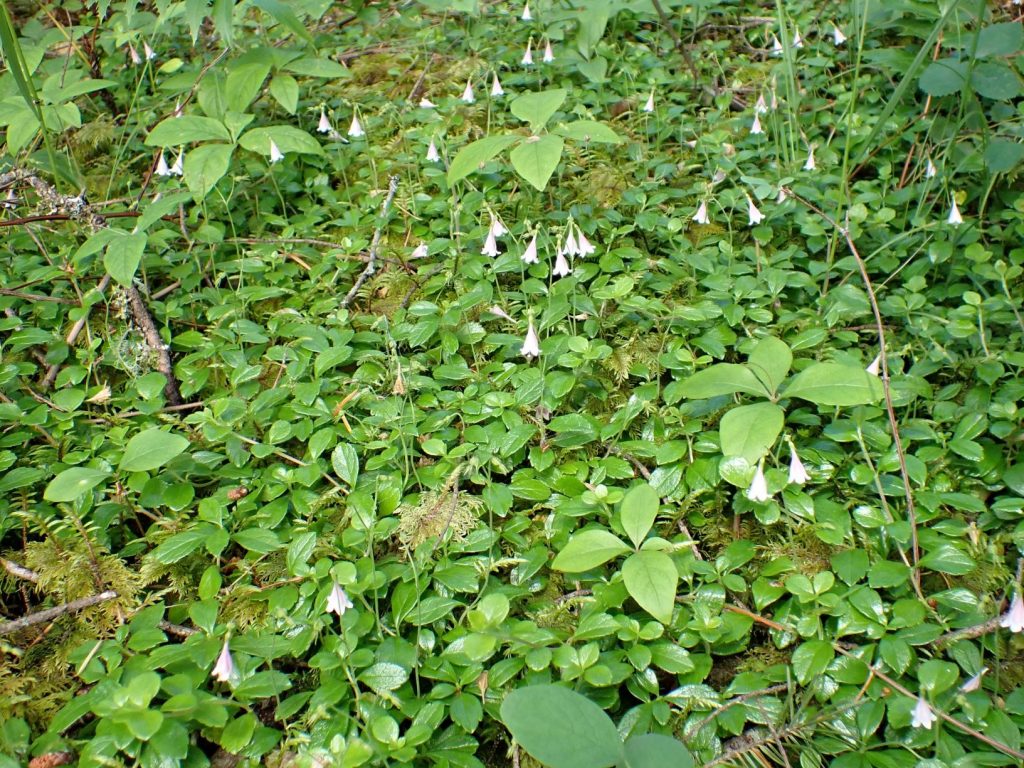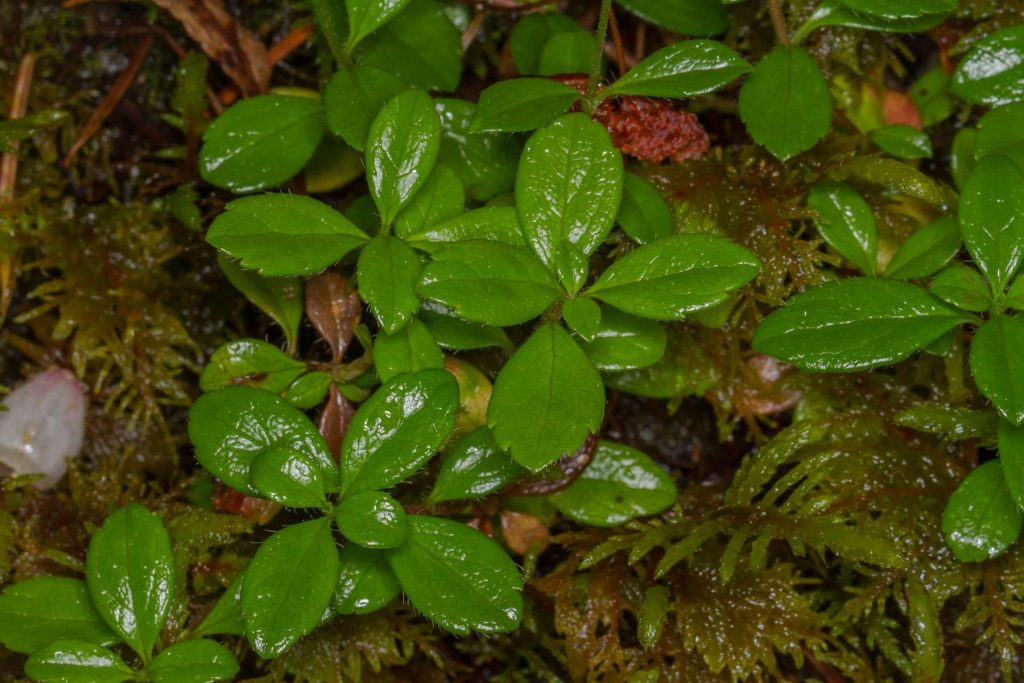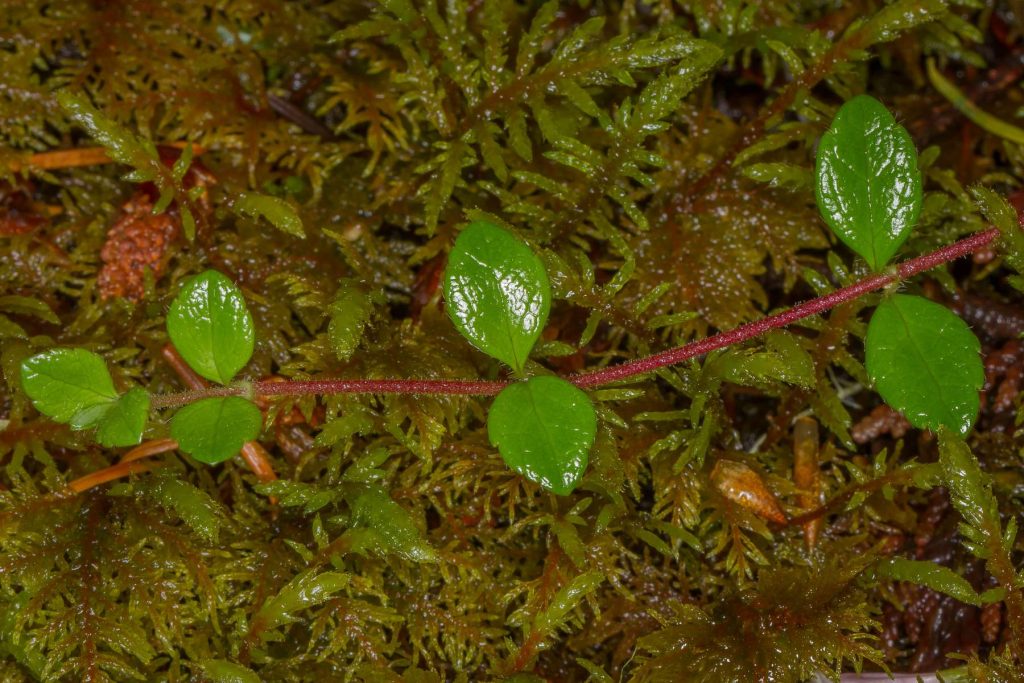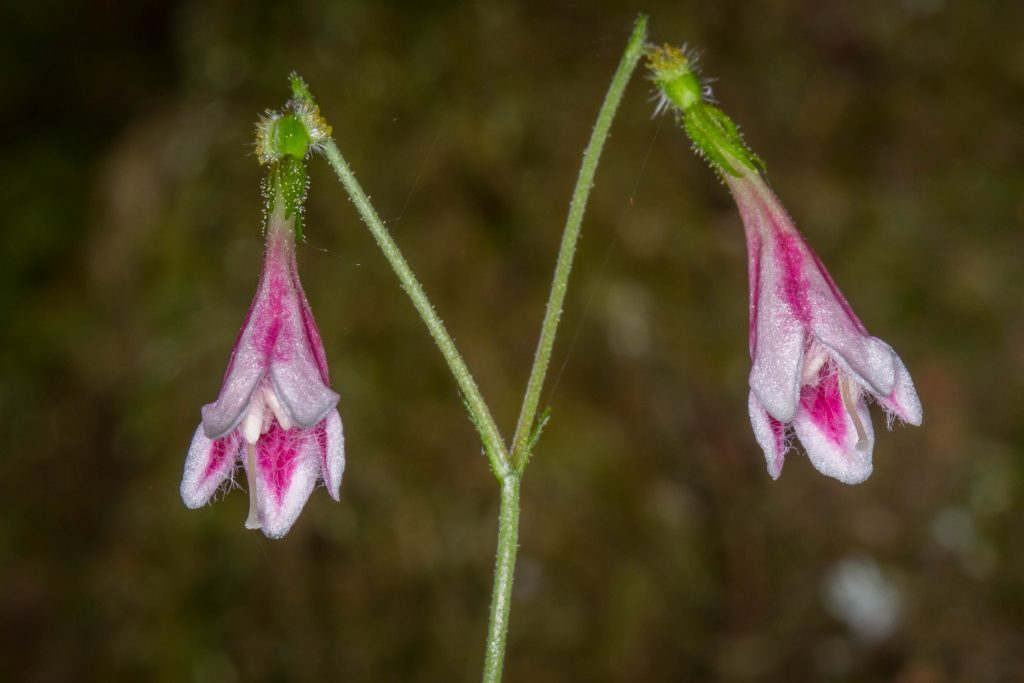Family: Caprifoliaceae
Common name: Twinflower
E-flora BC: https://linnet.geog.ubc.ca/Atlas/Atlas.aspx?sciname=Linnaea%20borealis
Wikipedia: https://en.wikipedia.org/wiki/Linnaea_borealis
If you walk through the woods when the sun is out, you may catch a glint of reflection from the forest floor. When you bend down to look, you’ll notice small, egg-shaped, shiny leaves arranged opposite to each other along a slender stem that’s trailing across the moss. It is likely that you have come across twinflower. If it’s early July in or around Nanaimo, you will notice the pretty pink nodding funnel-shaped flowers, suspended in pairs (like twins) on delicate stems above the foliage. In the fall, you can usually discern the brown spent flower-stalks still present on the plant.
Twinflower was a favourite of Carl Linnaeus, the 18th century Swedish taxonomist who formalized the binomial nomenclature that we use today to name organisms, (https://en.wikipedia.org/wiki/Binomial_nomenclature) and the plant got its scientific name Linnaea in his honour. The species name, borealis, indicates that this plant is found in the Northern hemisphere. Twinflower is circumboreal, which explains why Linnaeus could admire this plant in his native Sweden while we also find it growing right here in Nanaimo.



The leaves of twinflower are arranged in an opposite pattern along the stem, meaning that there are two leaves at each leaf node. In these erect shoots of the plant, you can see how successive leaf pairs are arranged at a 90-degree angle relative to each other.
Photo credit: Douglas Fraser

In addition to the opposite leaf arrangement, another characteristic of the Family Caprifoliaceae is the perfectly round stem – you can compare the photo of this twinflower stem to those of honeysuckle (Lonicera sp.) and snowberry (Symphoricarpos albus), other members of the Caprifoliaceae. Photo credit: Douglas Fraser

